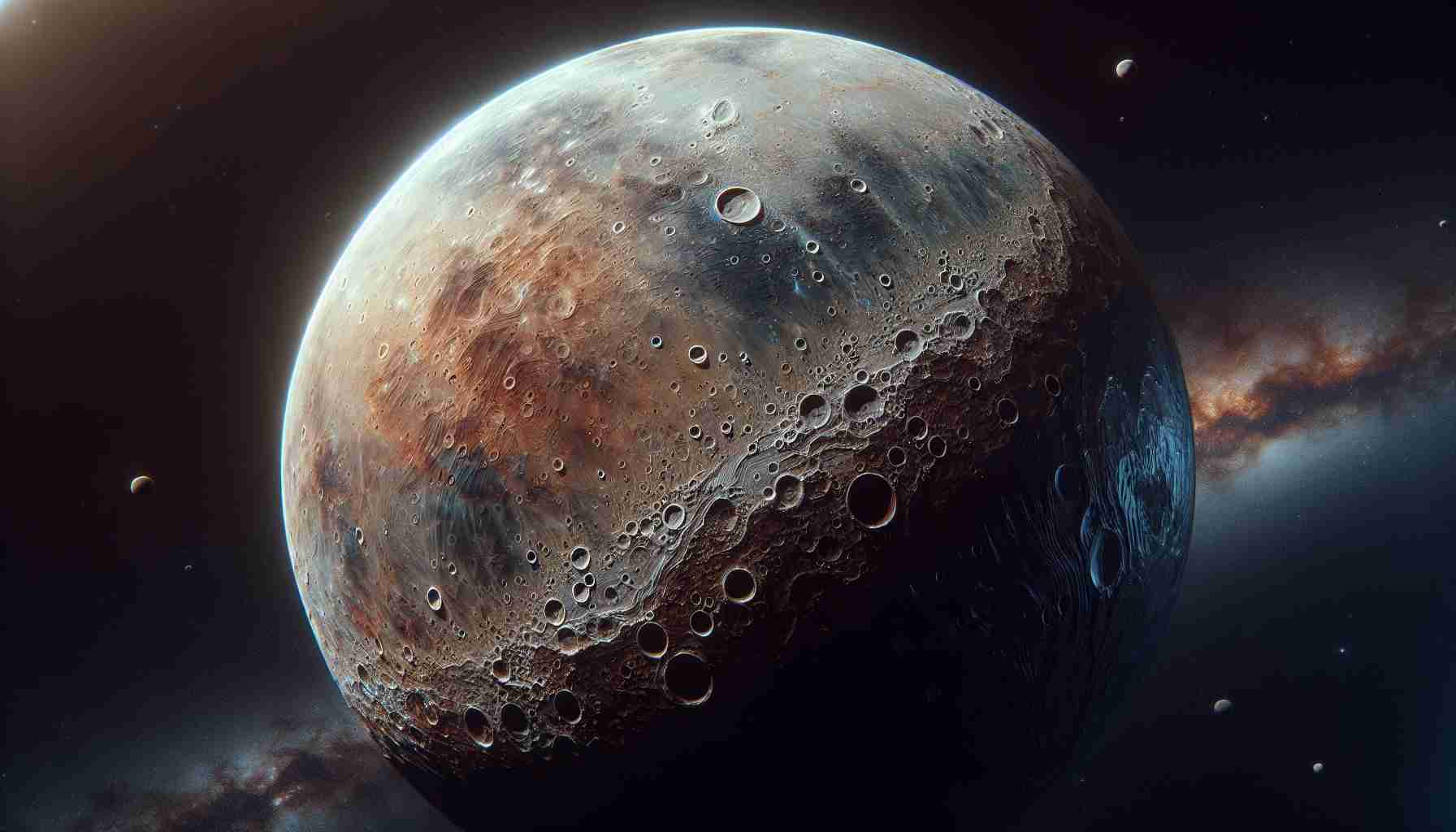Unveiling Mercury’s Mysteries Through Stunning Imagery
The BepiColombo spacecraft has made headlines by capturing breathtaking images of Mercury’s north pole during its closest flyby yet. On January 8, the spacecraft, a joint venture of the European Space Agency (ESA) and Japan Aerospace Exploration Agency (JAXA), soared within a mere 183 miles of Mercury, unveiling striking details of the planet’s surface.
These newly released photos highlight dark craters that have remained untouched by sunlight, alongside expansive volcanic plains and the vast Mendelssohn crater, which measures over 930 miles across. This particular crater showcases signs of ancient volcanic activity as its interior has been smoothed out by lava flows.
The spacecraft’s imaging reveals contrasting geological features, illustrating how recent eruptions have shaped Mercury’s landscape. The images depict a unique boundary between light and dark, where the brightness of sunlit craters sharply contrasts with the eerie shadows within unlit regions.
BepiColombo, launched in 2018, is set to enter orbit around Mercury in late 2026 after additional flybys. Its mission promises to explore the tantalizing possibility of water trapped in the planet’s shadows as scientists seek to unravel the mysteries of this enigmatic world. By analyzing the images and data collected, researchers hope to gain deeper insights into Mercury’s formation and geological history.
Mercury Unveiled: BepiColombo’s Groundbreaking Discoveries and Future Prospects
Exploring Mercury: The BepiColombo Mission
The BepiColombo spacecraft, developed through a collaborative effort between the European Space Agency (ESA) and the Japan Aerospace Exploration Agency (JAXA), has embarked on a quest to unlock the secrets of Mercury. As one of the most challenging planets to study due to its proximity to the Sun and harsh conditions, this mission is not only unprecedented in its closeness to Mercury but also in the scientific opportunities it presents.
Key Features of the BepiColombo Mission
– Launch and Journey: Launched in October 2018, BepiColombo is designed to conduct a series of flybys, including encounters with Earth, Venus, and Mercury itself, before entering orbit around Mercury in late 2026. This complex trajectory is necessary to slow down the spacecraft sufficiently to be captured by Mercury’s gravity.
– Scientific Instruments: The spacecraft is equipped with a suite of advanced scientific instruments aimed at evaluating Mercury’s surface composition, magnetosphere, and exosphere. Instruments include imaging devices, spectrometers, and magnetometers, each specifically tailored for assessing various aspects of the planet’s environment.
Insights and Discoveries
– Surface Features: The January 8 flyby showcased extraordinary details of Mercury’s surface, revealing dark craters that are in perpetual darkness and expansive volcanic plains. The images provide a critical view of geomorphological features, including the vast Mendelssohn crater, which offers insights into the planet’s volcanic history.
– Geological Information: Analysis of the high-resolution images indicates the presence of ancient volcanic activity. The smooth interior of Mendelssohn suggests movement from lava flows, offering clues to the planet’s geologic past and potential for past volcanic eruptions.
Prospective Findings
Scientists are particularly keen to explore the potential for water ice in Mercury’s permanently shadowed regions. As BepiColombo meticulously charts the planet’s topography, it could provide crucial data about the thermal dynamics and chemical composition of these frigid areas.
Limitations and Challenges
Despite its advanced technology, the BepiColombo mission faces challenges. The extreme temperatures and radiation near the Sun pose significant risks to the spacecraft’s instruments. Moreover, operating at such close quarters to Mercury necessitates meticulous planning and execution of data collection strategies.
Market Analysis and Future Trends
As space exploration becomes increasingly collaborative, missions like BepiColombo exemplify the shift towards international partnerships. The potential discoveries on Mercury could also influence future missions, fostering a renewed interest in planetary geology and astrobiology.
Security Aspects and Sustainability
Mr. Paul R. O’Brien, the mission’s project manager, emphasizes a commitment to sustainability within exploration frameworks, ensuring that missions like BepiColombo are conducted responsibly. Developing technologies and practices that minimize environmental impact will be critical in future explorations.
Conclusion and Predictions
The BepiColombo mission stands on the threshold of potentially groundbreaking discoveries that could redefine our understanding of Mercury. As it continues its journey through the solar system, scientists around the globe eagerly await the wealth of data and stunning imagery that will emerge, promising further illumination of one of our solar system’s most enigmatic planets.
For more insights on space exploration and ongoing missions, visit the European Space Agency.
